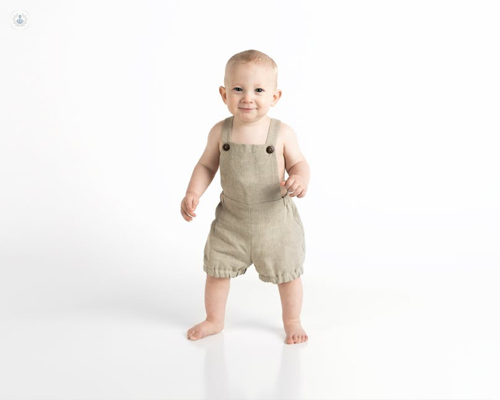


What is paediatric orthopaedics?
Paediatric orthopaedics is the branch of medicine that deals with injuries and musculoskeletal conditions in children and teens. It is also sometimes known as paediatric orthopaedic surgery.

The most common issues that children experience are foot deformities, gait disturbances, and hip dysplasia, among others. These issues can be hereditary, congenital, or acquired.
What conditions does a paediatric orthopaedic specialist treat?
As with other fields of medicine, an early diagnosis can help prevent an orthopaedic problem in childhood, and can ensure faster and better adapted treatment. Some example of conditions that are treated within this specialty include:
- Spinal deformities
- Arm and leg deformities
- Deformities of the musculoskeletal system due to neuromuscular and metabolic or other diseases.
Conditions that also stand out due to their frequency include:
- Foot deformities (flat foot, high instep)
- Walking alterations (lower limb length difference)
- Hip dysplasia
- Deformity of lower limbs.
What subspecialities does paediatric orthopaedics cover?
Paediatric orthopaedics generally covers the same subspecialities as in adult orthopaedics, but the specialists who work in this field have specifically been trained in congenital orthopaedic issues or those acquired as a child or teen. These conditions change and develop over time, and the body responds differently depending on the patients’ age. During childhood muscles and bones are continuously growing and developing. For this reason, it is important to detect and diagnose any orthopaedic condition as early as possible to be able to treat it adequately.
When is a specialist involved in treatment?
It is important to see an orthopaedic specialist when an issue is noticed in children. They can carry out a thorough physical examination to assess joint movement changes, identify areas of pain, and check joint stability.